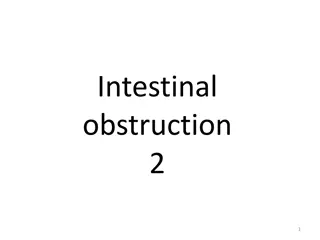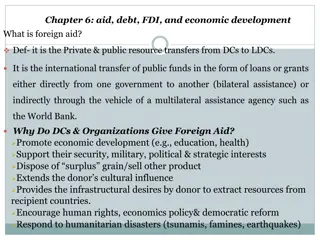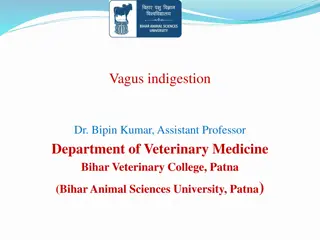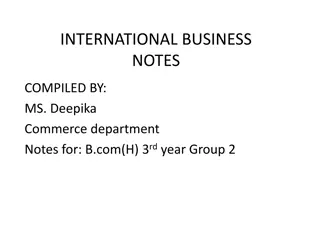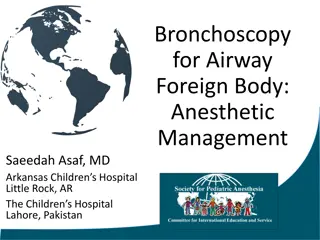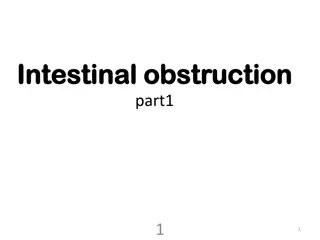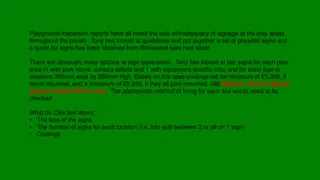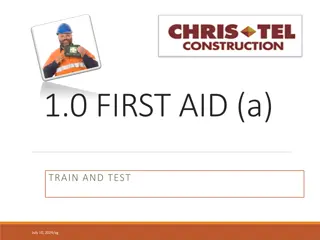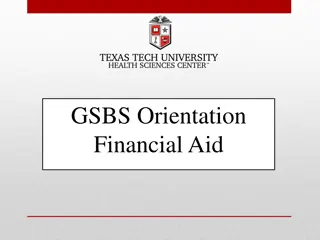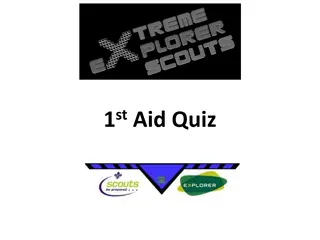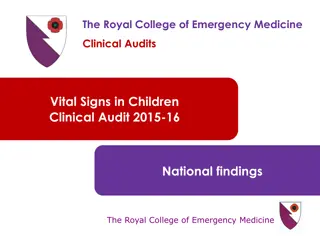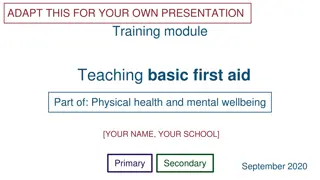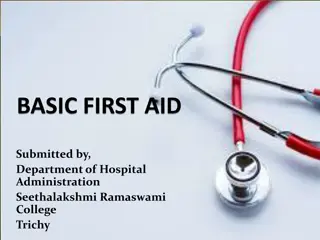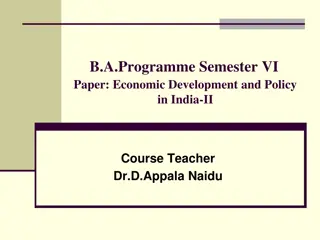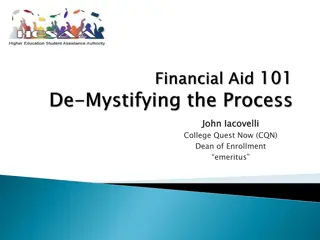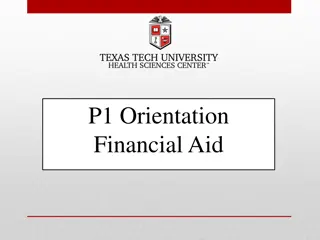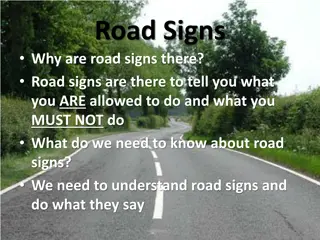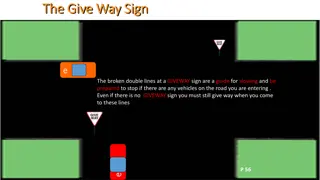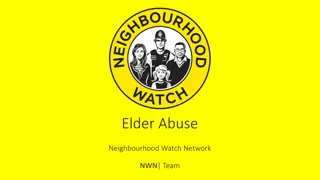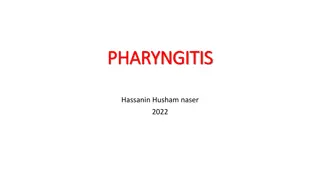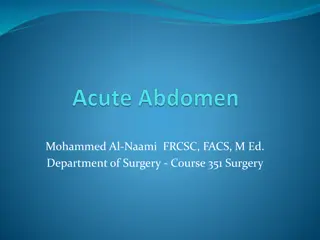First Aid for Foreign Body Obstruction: Causes, Signs, and Management
Learn about the common causes of foreign body obstruction, preventive measures, signs of airway obstruction, and how to manage airway obstruction in adults, children, and infants. Discover the steps to take for a conscious choking victim and an unconscious victim, including performing the Heimlich maneuver and CPR. Be prepared to handle emergency situations effectively.
Download Presentation

Please find below an Image/Link to download the presentation.
The content on the website is provided AS IS for your information and personal use only. It may not be sold, licensed, or shared on other websites without obtaining consent from the author. Download presentation by click this link. If you encounter any issues during the download, it is possible that the publisher has removed the file from their server.
E N D
Presentation Transcript
Objectives Enumerate commonest causes for FB obstruction. Remember prophylactic measures against FB airway obstruction. Identify signs of airway obstruction. Practice management of airway obstruction in: A Adult (conscious or unconscious) B Child (conscious or unconscious) C- Infant (conscious or unconscious)
Cont. Remember: Cut food into small pieces. Chew slowly. Avoid running, laughing during chewing or swallowing. Keep away small foreign bodies such as coins, bids, nuts... Causes: Meat is a common cause of obstruction. Other foods and foreign bodies. Dentures. Elderly with dysphagia.
Signs of airway obstruction Obstruction may be partial (patient chocking but able to cough) or complete. Inability to speak. Inability to cough. Difficulty to breath. High-pitched sounds or no sound during inhalation. Cyanosis. Victim clutches his neck.
I Adult FB airway obstruction A Conscious chocking victim: 1- Ask are you chocking? . 2- Recognize signs of chocking. 3- Stand behind, apply Heimlich s maneuver. For obese or pregnant, use chest thrust. 4- Repeat till FB expulsion or victim becomes unable to talk, becomes cyanosed or unconscious.
Cont. 5- call 997. 6- Every time you open airways, look for object and remove by finger sweep. 7- Begin CPR until you succeed or EMS arrive.
B- The victim is unconscious: Establish unconsciousness. Call 997. Every time you open airways, look for object and remove by finger sweep. If no breathing give 2 rescue breaths. Begin CPR until you succeed or EMS arrive. After 5 cycles, reassess & progress as mentioned in CPR.
II Child FB airway obstruction A- Child is Conscious: 1- Ask child are you chocking? . 2- Recognize signs of chocking. 3- Stand behind, apply Heimlich s maneuver. 4- Repeat till FB expulsion or victim becomes unable to talk, becomes cyanosed or unconscious.
Cont. 5- call 997. 6- Every time you open airways, look for object and remove. Never use blind finger sweep.. 7- If obstruction is not relieved in 2 minutes, call 997. 8- Begin CPR until you succeed or EMS arrive.
B- Child is unconscious: Establish unconsciousness. Call 997. Every time you open airways, look for object and remove by finger sweep. If no breathing give 2 rescue breaths. Begin CPR until you succeed or EMS arrive. After 5 cycles, reassess & progress as mentioned in CPR.
III Infant FB airway obstruction A- infant is conscious: 1- Confirm airway obstruction (absent or weak cry). 2- Give 5 back blows, turn carefully supporting head and give 5 chest thrusts. 3- Repeat until succeeding or infant becomes unconscious.
Cont. 4- Call 997. 5- Open airways and look into mouth, remove object, never use blind finger sweep. 6- Try to ventilate. 7- If unsuccessful, begin CPR. 8 If obstruction is not relieved after 2 minutes, call 997.
B- Infant is unconscious Establish unconsciousness. Call 997. Every time you open airways, look for object and remove by finger sweep. If no breathing give 2 rescue breaths. Begin CPR until you succeed or EMS arrive. After 5 cycles, reassess & progress as mentioned in CPR.
Viper Bites Pain, swelling Progressive edema Bruising Blood-filled vesicles
Viper Bites Weakness, sweating, nausea, vomiting Tachycardia, hypotension, shock Prolonged clotting Bleeding gums Hematemesis, melena, hematuria Numbness, tingling, neurological symptoms
Snake bite Management Calm victim Oxygen Proximal constricting band ( + ) Clean, bandage wound Immobilize bitten area, keep dependent Watch constricting bands, bandages, splints carefully for edema Transport
Snakebite Management Do NOT Apply ice Cut and suck Actively attempt to locate snake Bring live venomous snake to hospital


